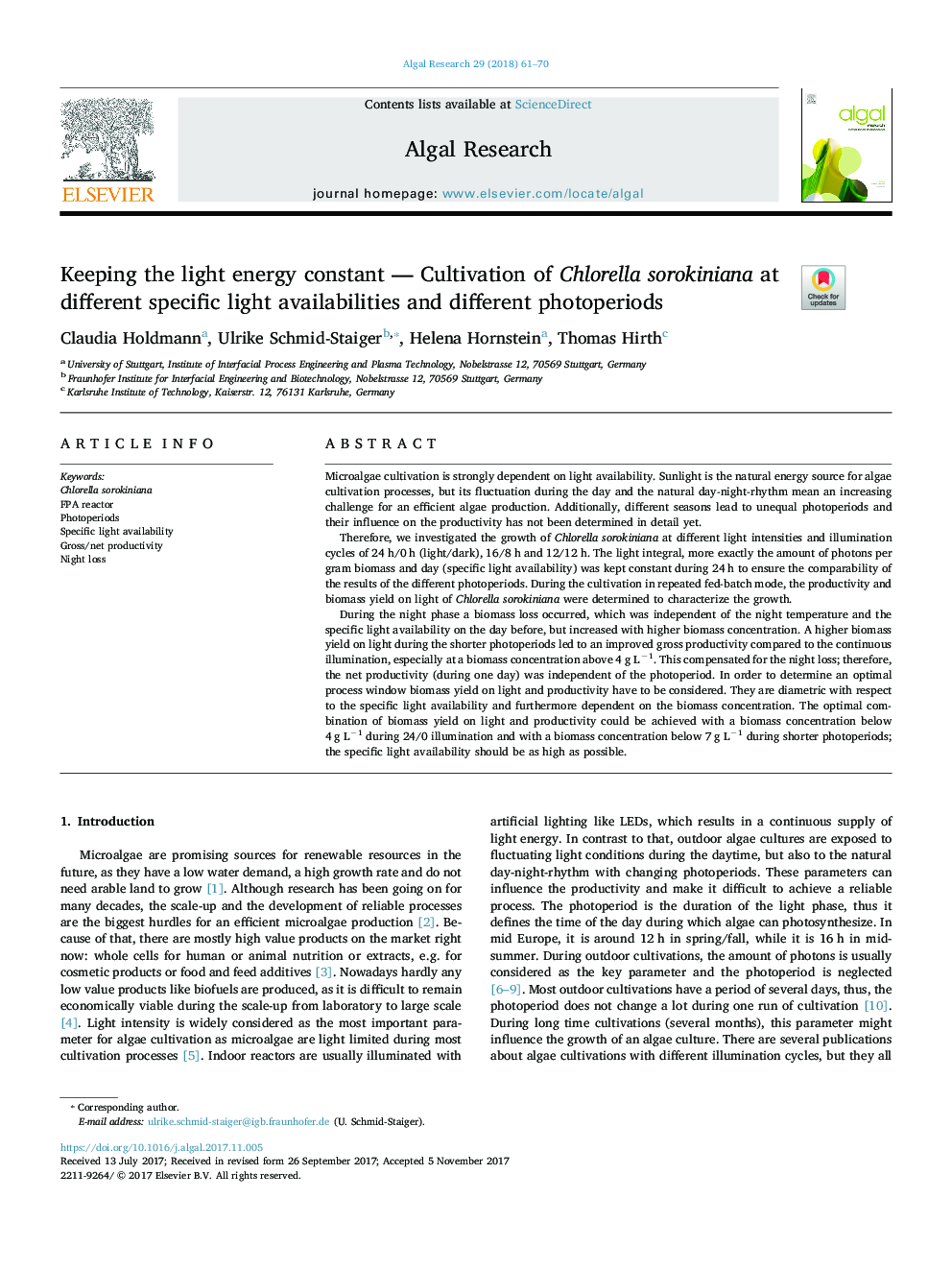| Article ID | Journal | Published Year | Pages | File Type |
|---|---|---|---|---|
| 8086208 | Algal Research | 2018 | 10 Pages |
Abstract
During the night phase a biomass loss occurred, which was independent of the night temperature and the specific light availability on the day before, but increased with higher biomass concentration. A higher biomass yield on light during the shorter photoperiods led to an improved gross productivity compared to the continuous illumination, especially at a biomass concentration above 4 g Lâ1. This compensated for the night loss; therefore, the net productivity (during one day) was independent of the photoperiod. In order to determine an optimal process window biomass yield on light and productivity have to be considered. They are diametric with respect to the specific light availability and furthermore dependent on the biomass concentration. The optimal combination of biomass yield on light and productivity could be achieved with a biomass concentration below 4 g Lâ1 during 24/0 illumination and with a biomass concentration below 7 g Lâ1 during shorter photoperiods; the specific light availability should be as high as possible.
Keywords
Related Topics
Physical Sciences and Engineering
Energy
Renewable Energy, Sustainability and the Environment
Authors
Claudia Holdmann, Ulrike Schmid-Staiger, Helena Hornstein, Thomas Hirth,
